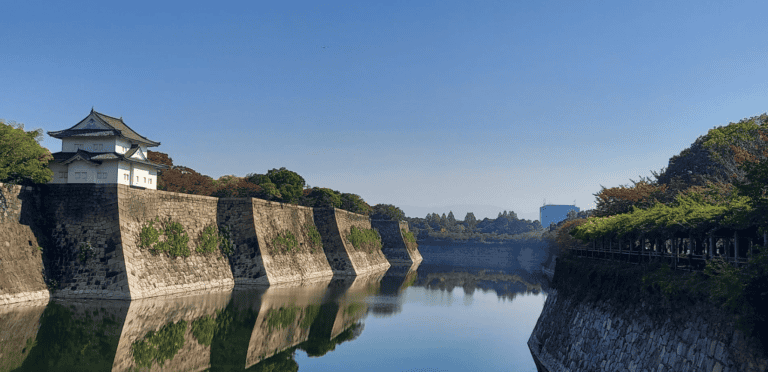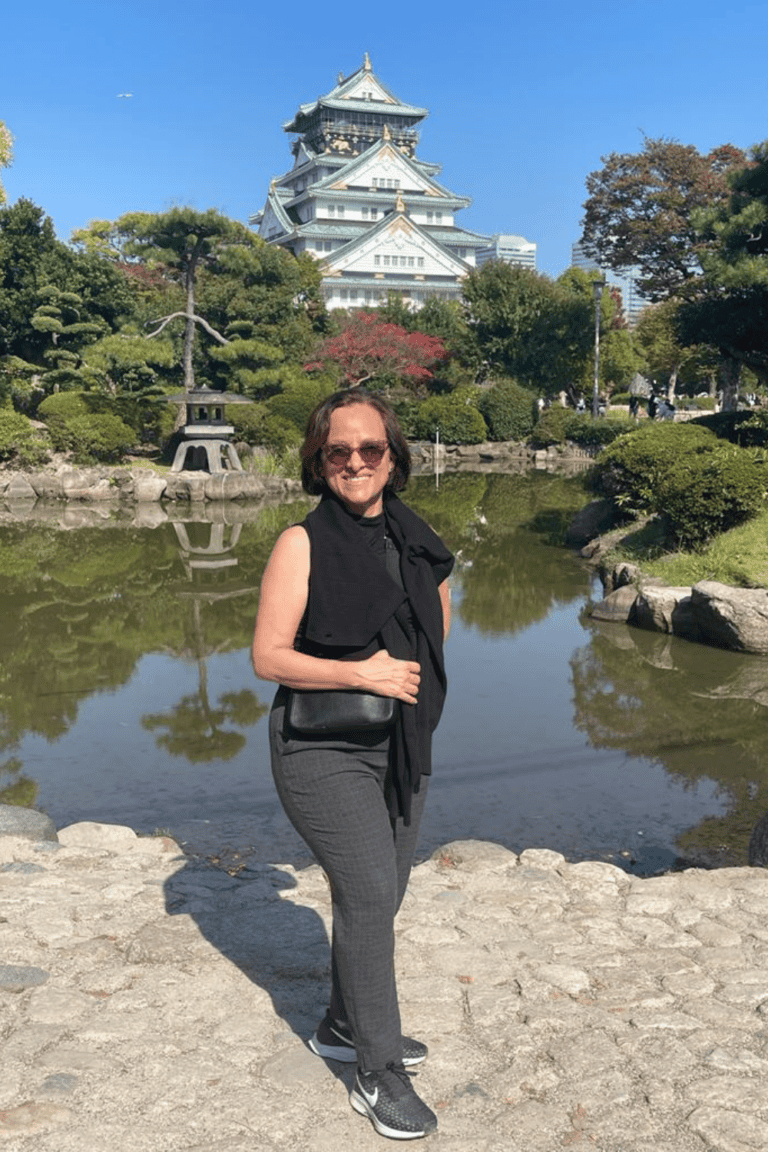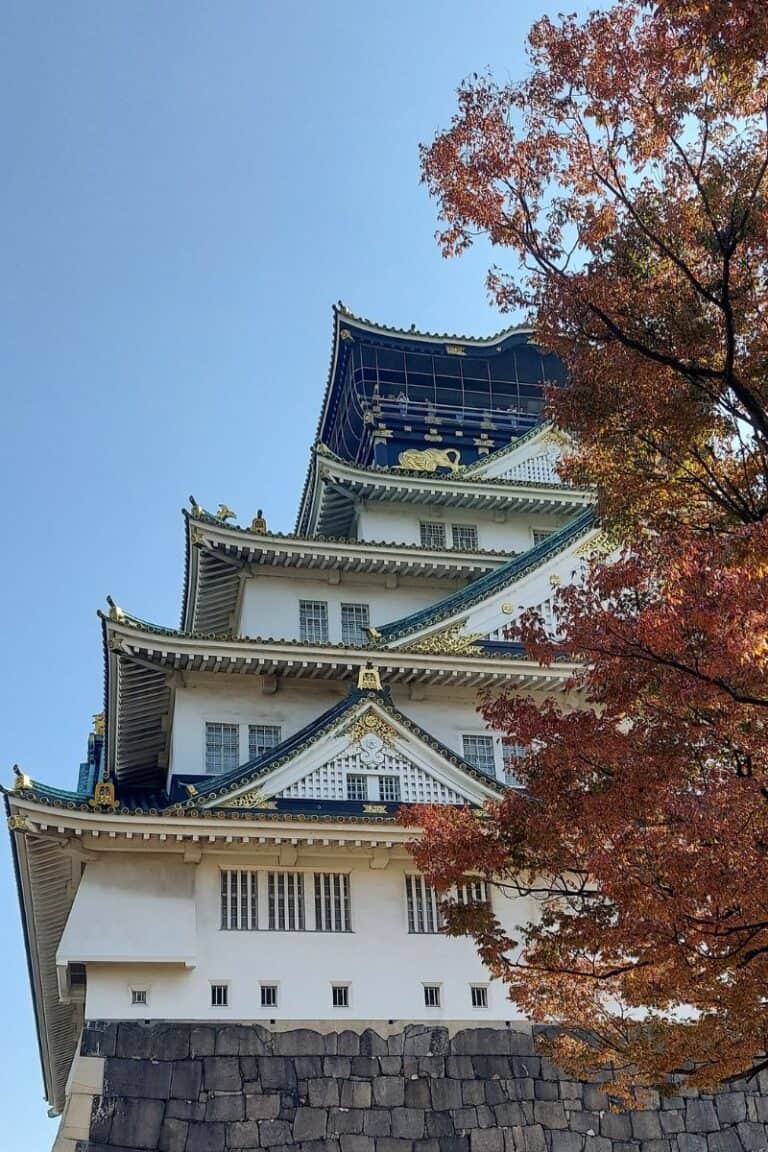Visit Kanazawa Japan: Discover Castles, Traditional Gardens, Geishas and Samurai Without the Crowds
To experience all the cultural wonders of Japan without the crowds visit the city of Kanazawa.
Located just 3-hours east of Tokyo on the coast of the Sea of Japan.
Kanazawa has a beautifully restored Edo-period castle, one of the three Great Gardens of Japan, not one but three Geisha districts, and even a Samurai district.
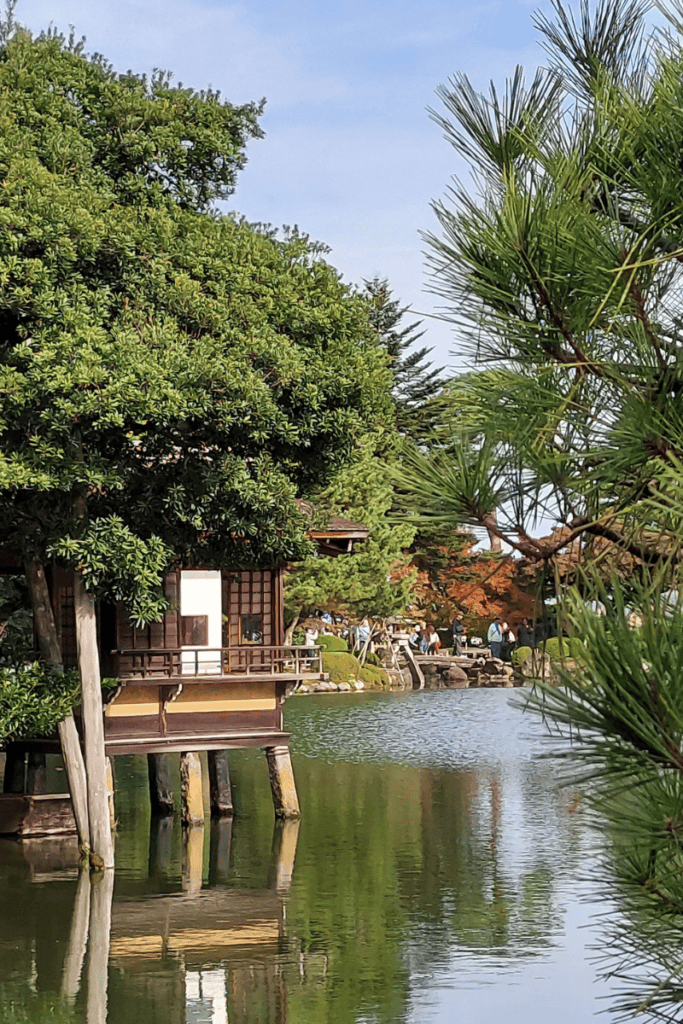
On my first trips to Japan, like many visitors, I explored Kyoto and Nara to see their famous temples and geisha.
On my return from Hiroshima, I visited Himeji to marvel at Japan’s most impressive castle.
These cities are beautiful and the temples are breathtaking.
Yet each time I return to Japan the crowds seem to grow larger.
Recently, the overwhelming number of visitors made it hard to fully appreciate the beauty and serenity these places are meant to offer.
However, during my last visit to Japan, I discovered Kanazawa.
Kanazawa is a city where you can experience a traditional Edo-period castle as well as beautiful temples and shrines.
It even has well-preserved teahouse districts (Geisha) like Kyoto without Kyoto’s high hotel prices or the always-present crowds.
Kanazawa also boasts one of Japan’s three great gardens, Kenrokuen, making it a perfect alternative for those seeking history, beauty, and tranquility.
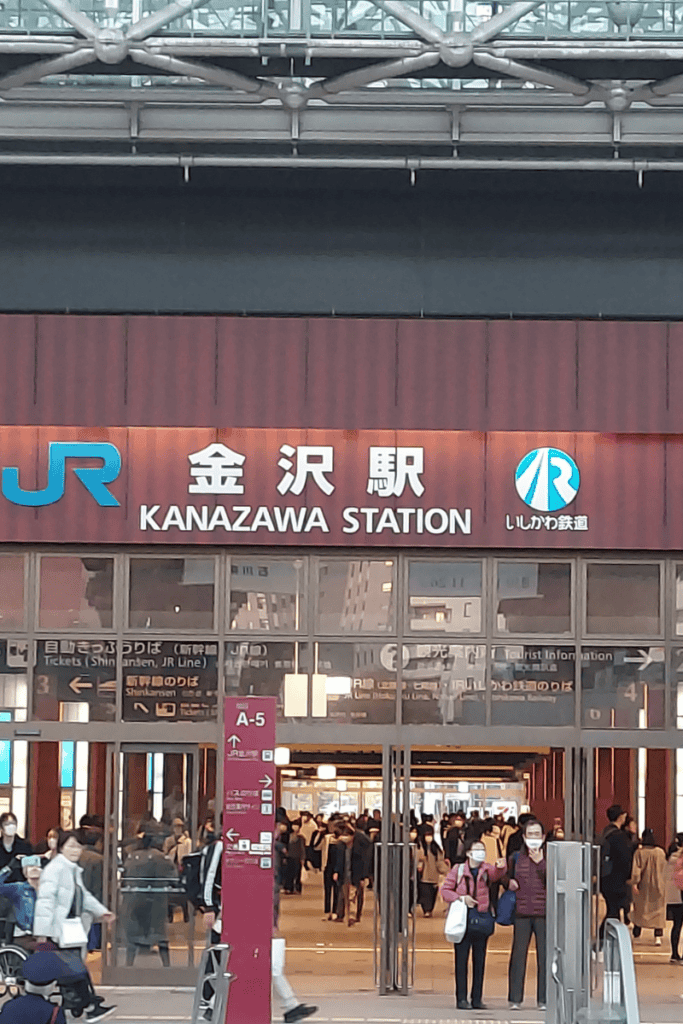
Getting to Kanazawa
The fastest and easiest way to get to Kanazawa is by train.
From Tokyo
You can take a direct train from Tokyo Station to Kanazawa Station.
If you have a JR Pass it will be included with your pass.
The train takes around 3 hours from Tokyo to Kanazawa.
The nearest airport to Kanazawa is Komatsu Airport.
You can take a flight to Komatsu from Haneda Airport.
When you arrive at Komatsu Airport you will have to transfer to Komatsu Train Station and take a train to Kanazawa Station anyways.
The trip time will also be around 3 hours, so we suggest you take the train.
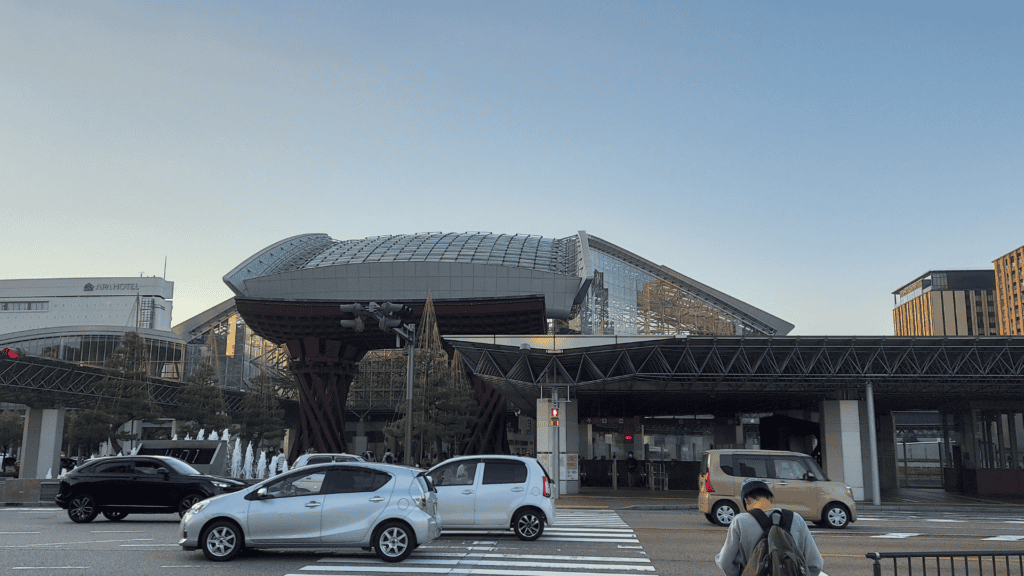
From Osaka
There are no direct trains from Osaka to Kanazawa.
Nevertheless, it is one easy transfer at Tsuruga.
Take a train from Shin-Osaka to Tsuruga where you’ll change trains and take one to Kanazawa Station.
Kanazawa Station is a large modern building with buses, transportation, and many hotels within walking distance.
For me, this is the perfect arrival point for your visit to Kanazawa Japan.
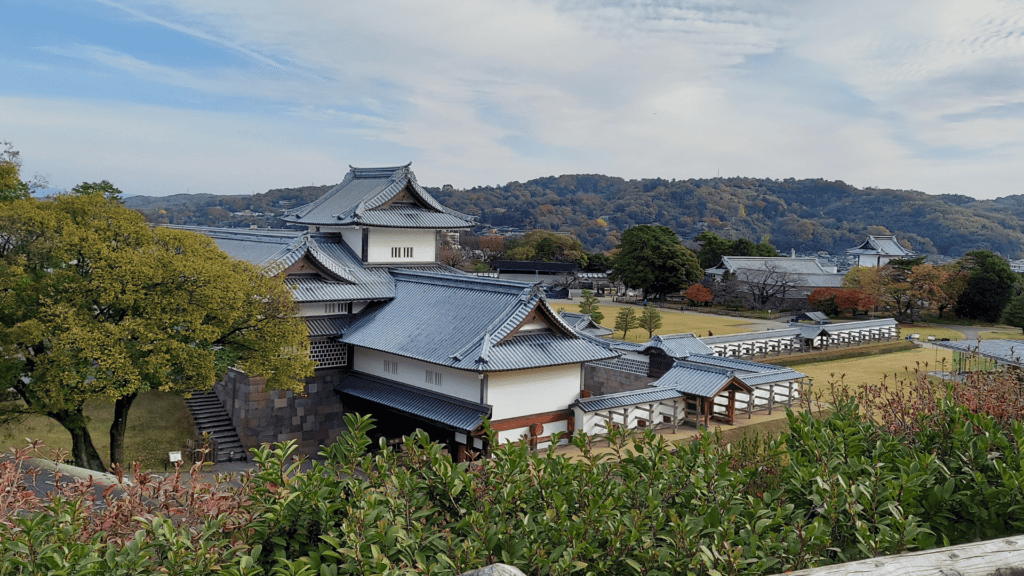
Kanazawa Castle Park
There are two Edo-period wonders in Kanazawa.
Kanazawa Castle and Kenrokuen Garden.
Kanazawa Castle is a partially restored castle located within the Kanazawa Castle Park.
It was built by the Maeda family starting in 1583, it was the home of the family until the end of the Edo Period.
The original castle burnt down several times over the centuries.
The only things that survived the most recent fires of 1881 were two storehouses and the Ishikawa-mon Gate.
The surviving gate dates from 1788 and faces Kenrokuen.
Today you can enter three restored large-scale wooden buildings for a small fee. The buildings are reconstructions of the buildings that existed 125 years ago.
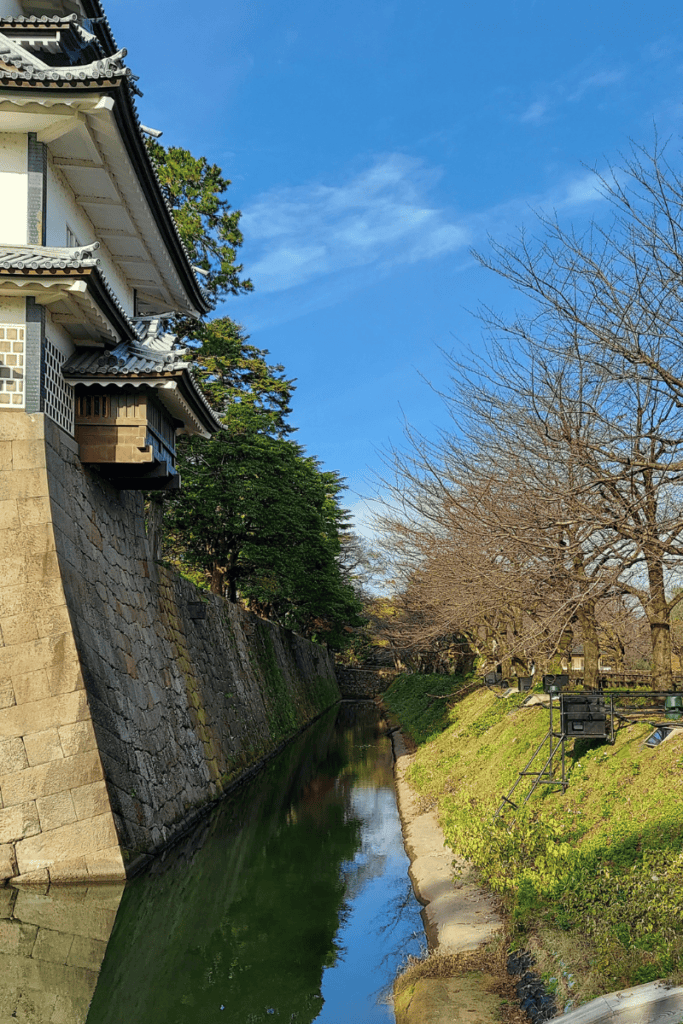
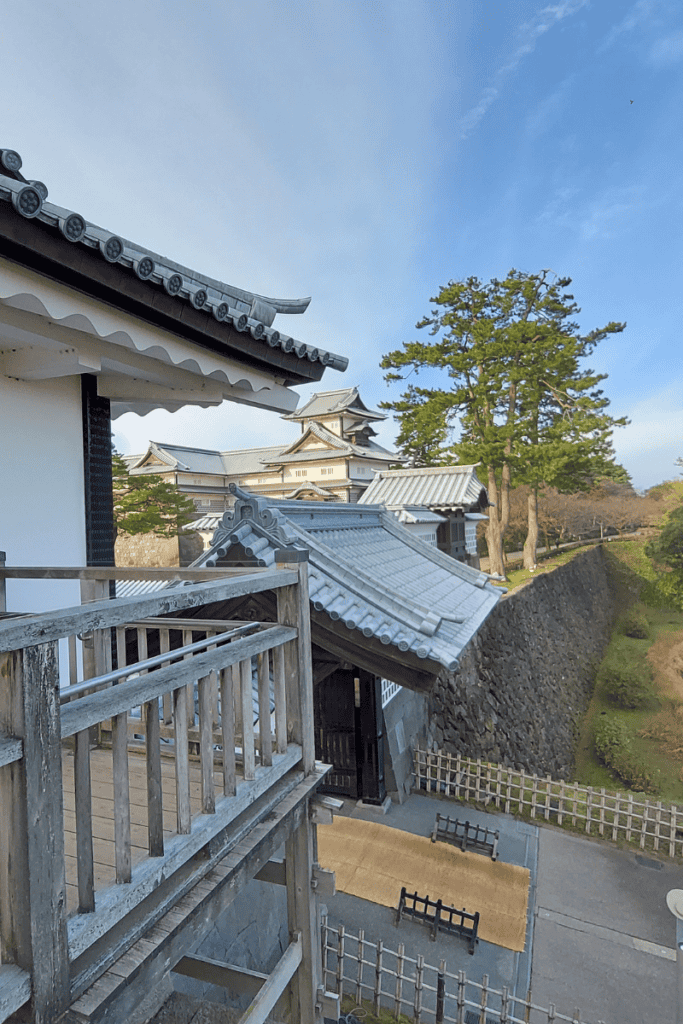
Inside the buildings are displays and models of the castle, showing the various techniques used for the restoration.
During the Meiji period (1868-1912) the castle became the Japanese Army headquarters and then was used by Kanazawa University until 1996.
Today the castle continues under restoration efforts, with additions from the original plans.
One of my favorite things from the visit was the views of the surrounding city and the park from the top of the gates.
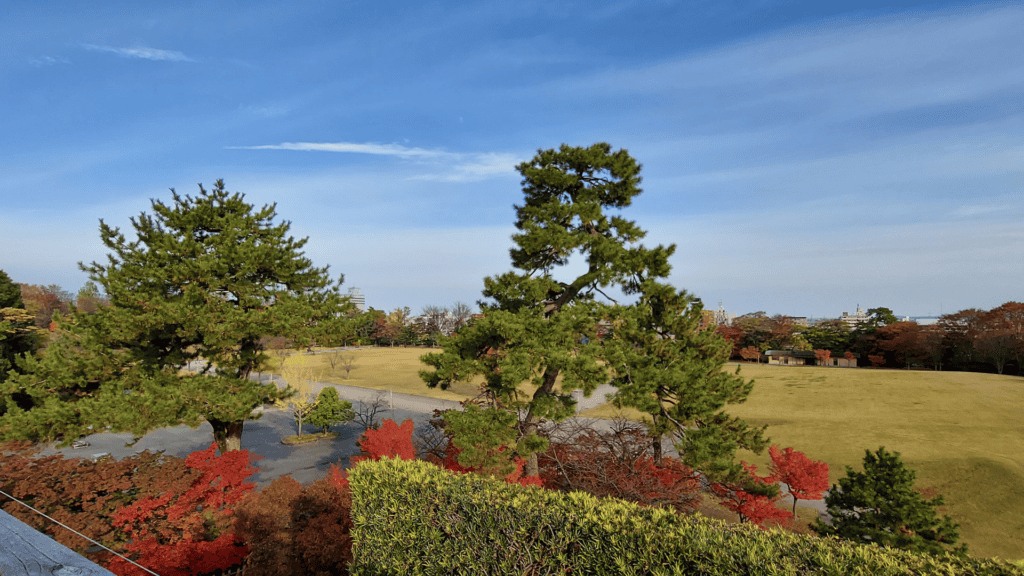
Surrounding the castle buildings are scenic gardens which look particularly lovely in the oranges and reds of Autumn.
Outside the castle gates, you’ll find an extensive green park used by locals and visitors for jogging, playing, and relaxation.
It is a great place to bring some lunch or snacks and sit on the lawn to eat while contemplating the breathtaking castle.
Just remember to take your trash with you. There are no trash cans in the park.
For more information on Kanazawa Castle Park visit the official website.
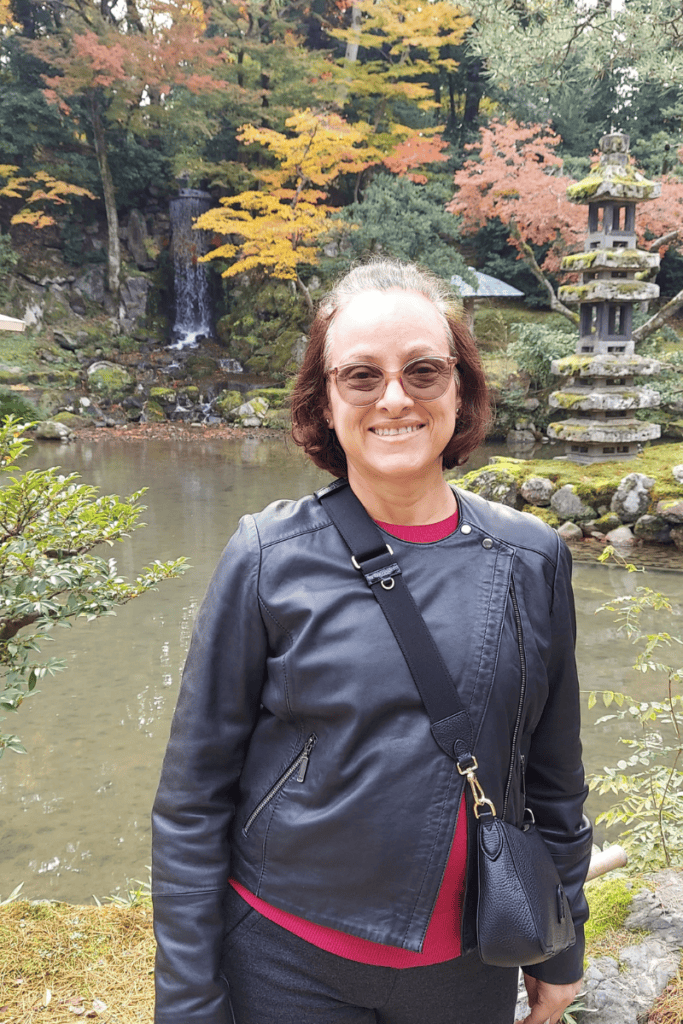
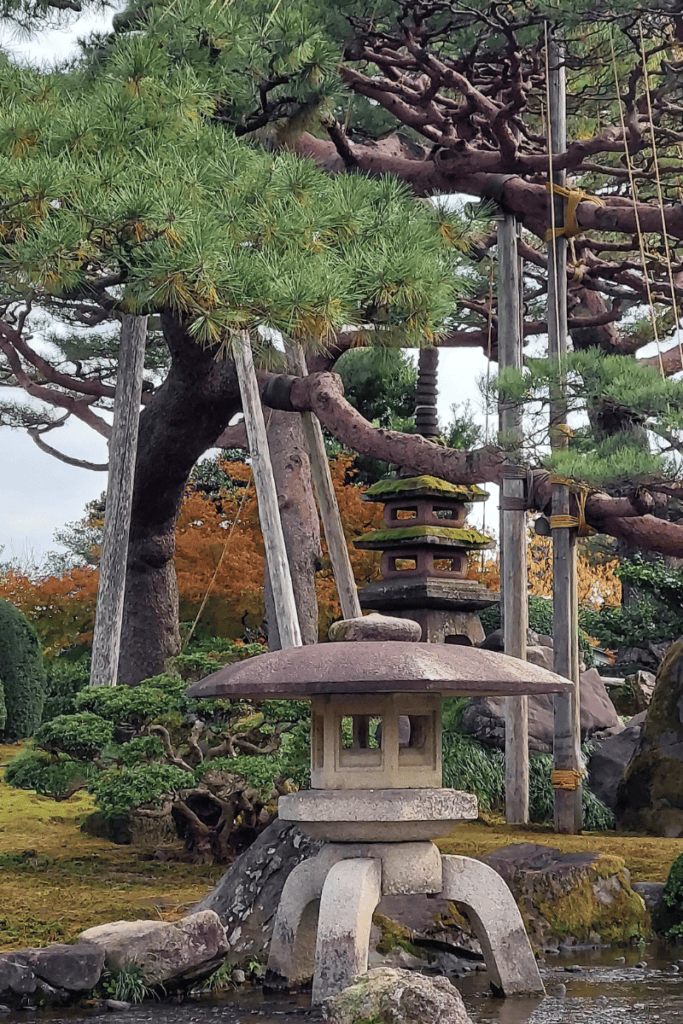
Kenroku-en
Exit the Castle Park through the Ishikawa-mon Gate and cross the bridge to reach Kenroku-en.
The Japanese are master gardeners and you will find meticulously curated gardens in almost every city.
So imagine being considered one of The Three Great Gardens of Japan.
To be considered one of the great gardens it must embody the six attributes of a perfect garden: spaciousness, seclusion, artificiality, antiquity, waterways, and panoramas.
Along with Kairaku-en in Mito and Koraku-en in Okayama, Kenroku-en has stood as one of The Three Great Gardens of Japan since the late 1800s due to its impressive design.
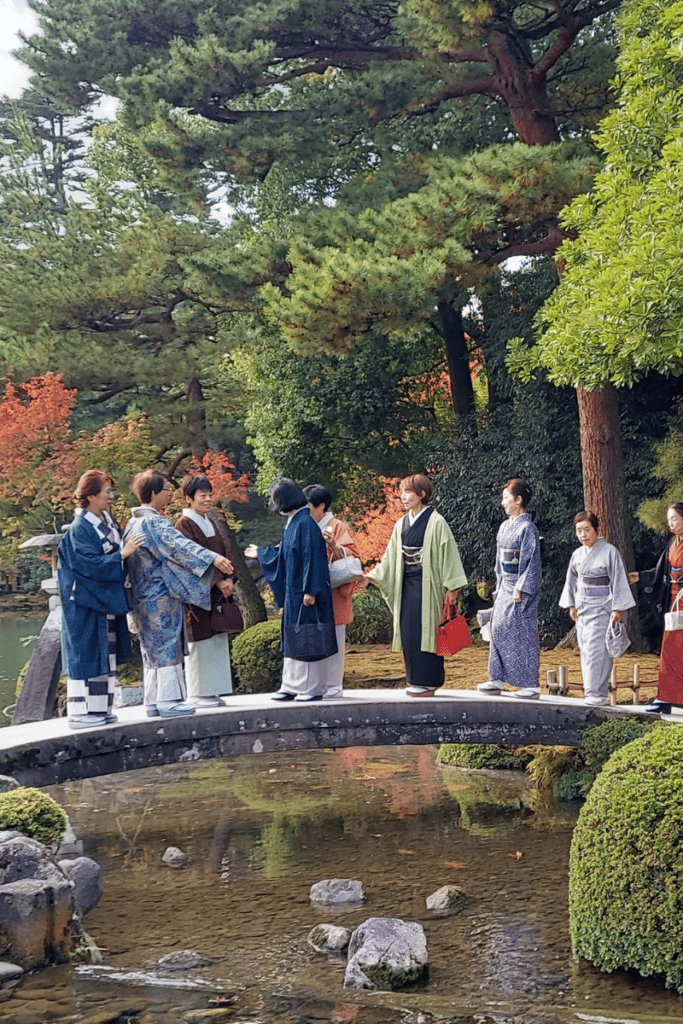
Each of these gardens represents a different aspect of nature.
Kenroku-en symbolizes snow, Koraku-en symbolzes the Moon, and Kairaku-en symbolizes flowers.
Kenroku-en is a strolling-style landscape garden, with several ponds and meandering streams.
Tea houses, stone lanterns, and pagodas are perfectly placed throughout creating stunning vistas wherever you look.
Furthermore, every corner of the garden is designed to look stunning in every season of the year.
Of the places I visited in Kanazawa, this was probably the most crowded, and yet it felt peaceful and joyful at the same time.
For me, this garden alone was worth the visit to Kanazawa.
Another great thing about this park is that it is accessible, they even provide wheelchairs if you ask in advance.
For the latest information on operating hours, entrance fees and a map of the garden visit the Kenrokuen official website.
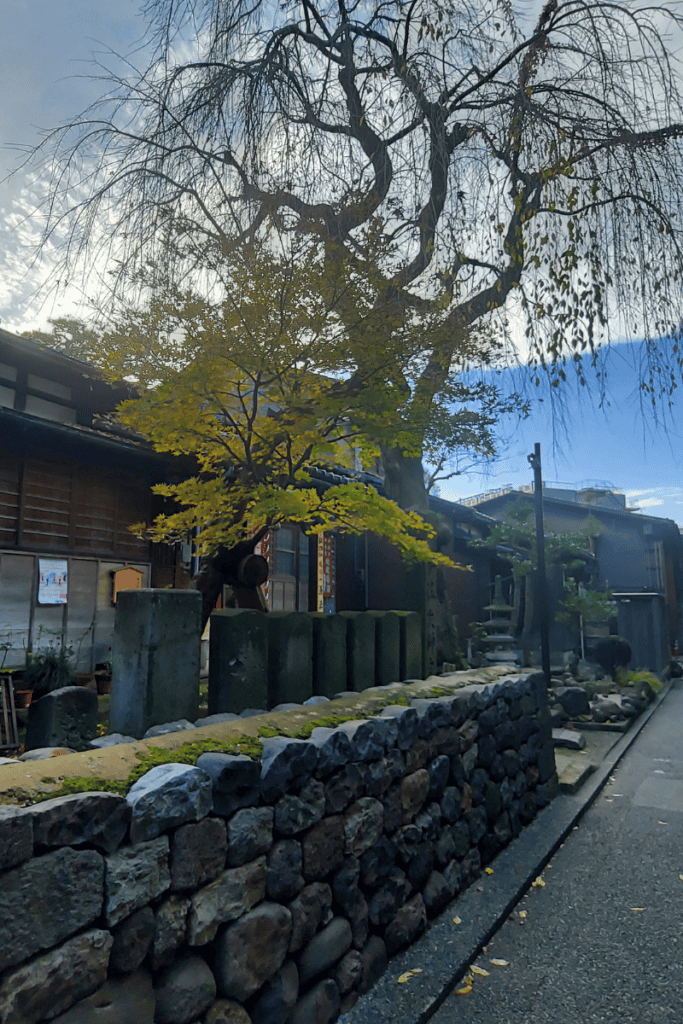
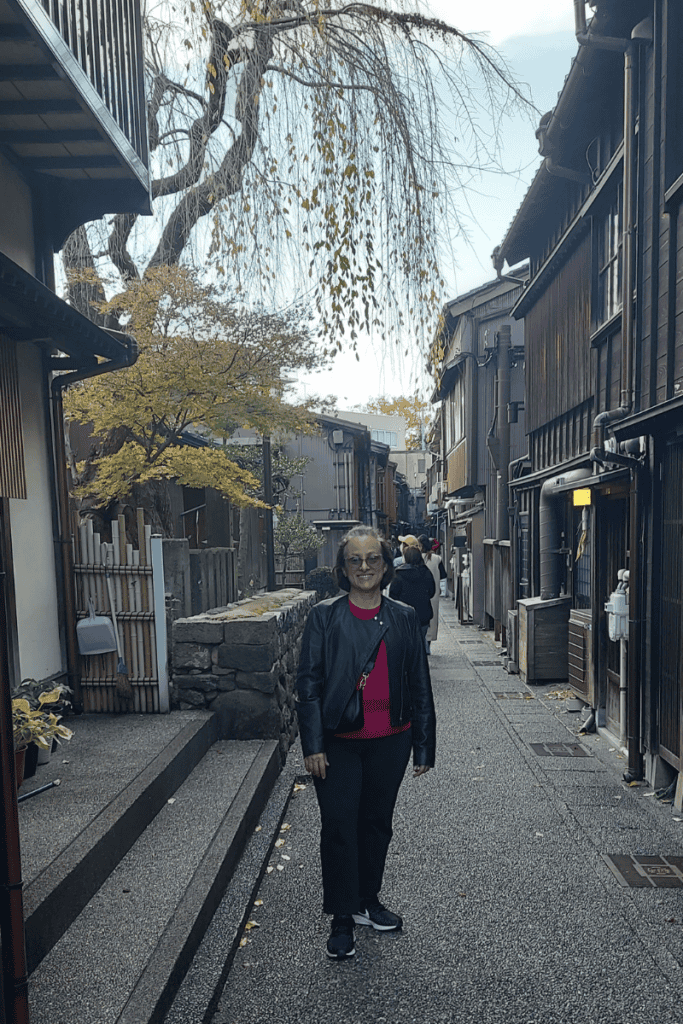
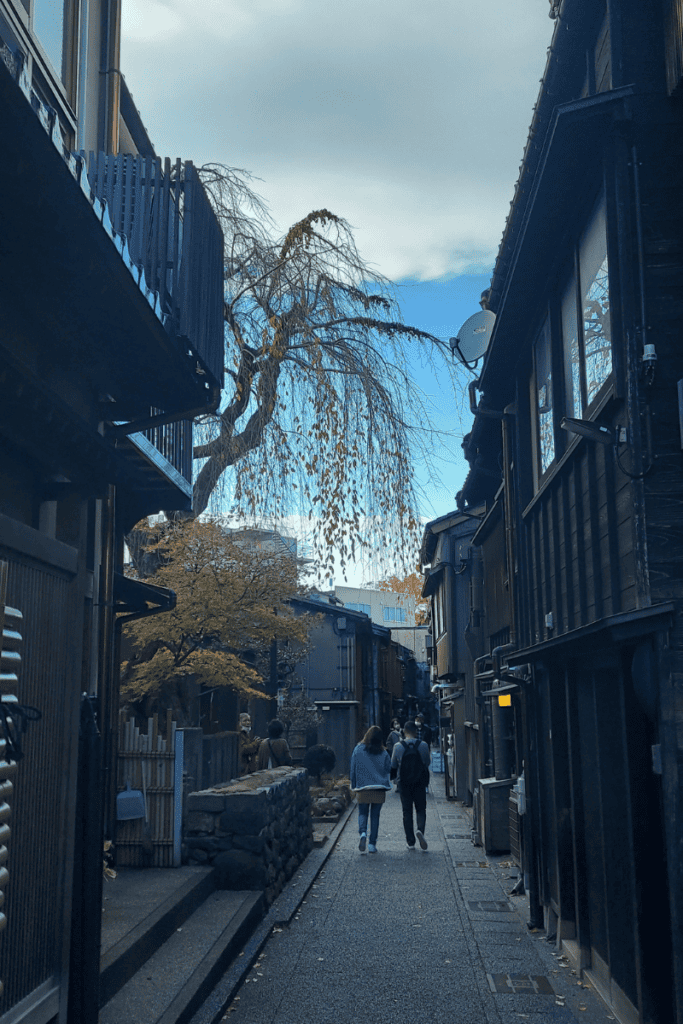
Teahouse Districts: AKA Geisha Districts
Kanazawa has three distinct teahouse (Chaya) districts.
They are well preserved and still functioning today.
Higashi Chaya Gai (East Teahouse District)
The largest and most visited of the three districts.
On my first night in Kanazawa, I walked to Higashi Chaya and found the beautifully preserved houses.
It was quiet and there were few people around.
Most places were closed but some restaurants and teahouses were open, but not to the general public.
I returned the following day and was surprised at the change. The alleys were full of people, many stores were open selling food and souvenirs.
It seemed very touristy.
But there are two teahouses open to the public; Shima Teahouse and Kaikaro Teahouse.
For more information on what to see in Higashi Chaya visit the Japan-guide website.
Nishi Chaya Gai (West Teahouse District)
I didn’t visit Nishi Chaya district during my trip.
This is a much smaller area than Higashi Chaya and it has only one place open to the public, a museum called the Nishi Chaya Shiryokan.
But the houses and buildings in the area are well preserved if you want a taste of what a Chaya (teahouse) district was like in the Edo Period.
Kazuemachi (Hidden Teahouse District)
This small chaya district is basically across the street from Higashi Chaya bordering the Asano river.
Much quieter and less crowded you can stroll this area during the day or night for a delightful experience.
You might even catch the sound of a geisha playing music as you stroll down one of the alleyways.
Nagamachi Samuari District
You can reach the Nagamachi district by walking about 25 minutes from Kanazawa Station.
Nagamachi is the preserved historic area of Kanazawa that was once the residential district for the city’s samurai.
It is a lovely area of canals and stone-flagged narrow lanes that thread their way between tile-topped earth walls.
One of the main attractions in Nagamachi is the centrally located Nomura-ke, a restored samurai residence.
On display are some of the lifestyle and artifacts of the era when samurai were prosperous.
Another attraction is the Shinise Kinekan Museum, a restored pharmacy displaying the lives of the merchant class which rose in prosperity as the samurai declined.
Some of the former samurai houses and their gardens are also open for public viewing.
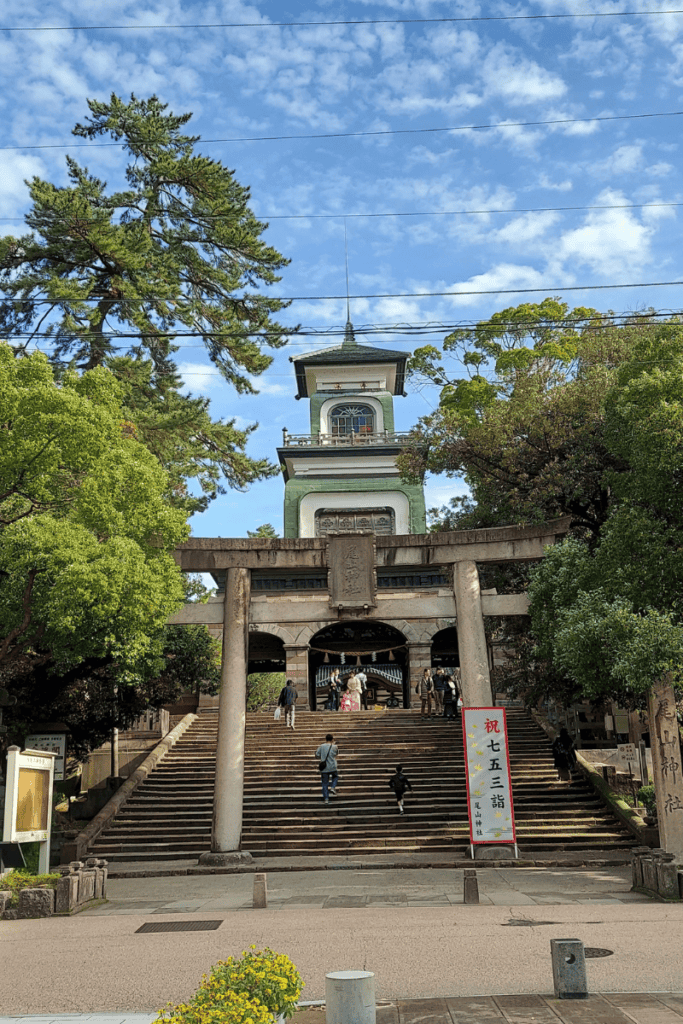
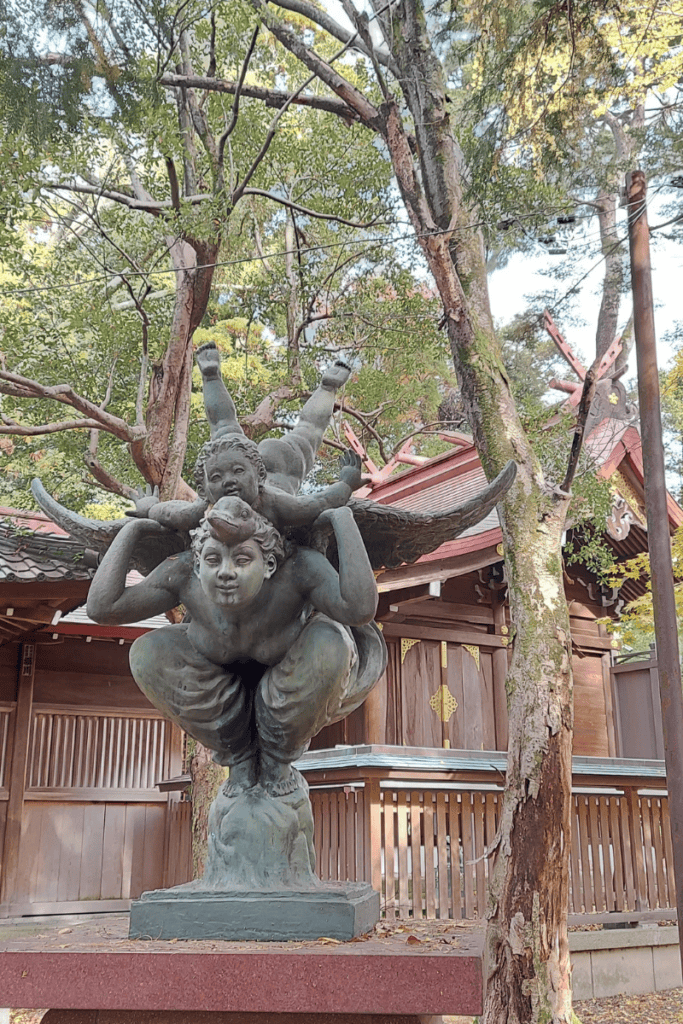
Oyama Shrine
Through the Nezumita-mon Gate at Kanazawa Castle, across a footbridge, you’ll find this splendid Shinto shrine.
The shrine was established in 1599, it is dedicated to Maeda Toshiie, the first lord of Kaga Domain.
It was moved to its present location in 1873 and renamed to Oyama-jinja.
The main gate is a peculiar mix of traditional Japanese, Chinese, and European religious architectural elements not commonly found in Japan.
The third floor is particularly famous for its Dutch stained-glass windows.
I was also surprised by the sculptures found around the garden of the shrine.
It was an unexpected and scenic find.
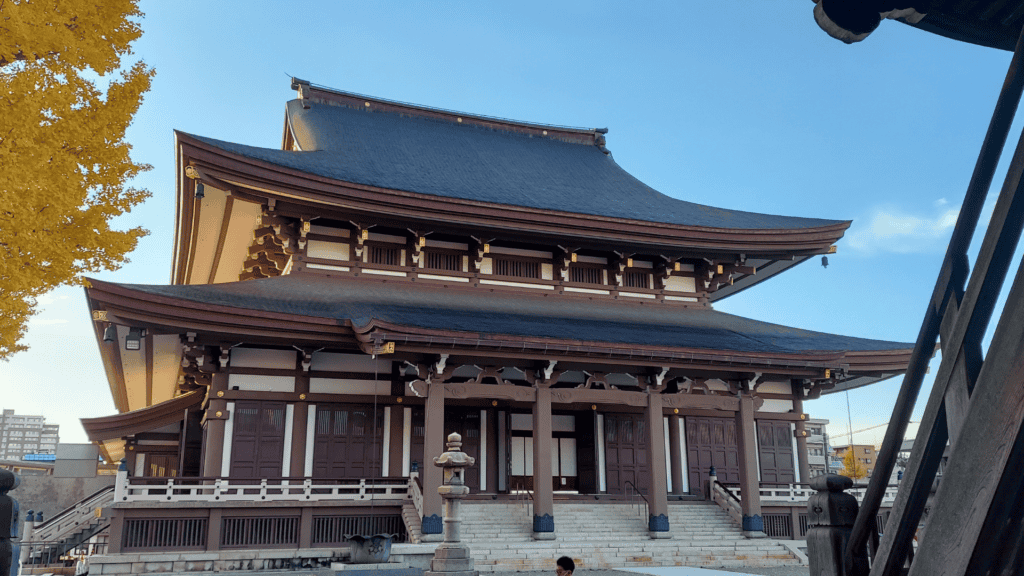
Other things to do in Kanazawa
There are so many things to do during a visit to Kanazawa Japan, both traditional and modern.
Visit Omicho Market for a taste of a Japanese food market. It is just a 14-minute walk from Kanazawa Station and a great place for lunch or dinner.
There are many smaller museums including the 21st Century Museum of Contemporary Art and the Noh Museum.
Walking to and from the Kanazawa Station to Higashi Chaya and the castle you will discover several temples and shrines.
Oriental Brewing near Higashi Chaya is a nice surprise for any beer lover. It’s a nice stop after exploring the Geisha district across the street.
Visiting Kanazawa Japan is a great alternative to experiencing Japanese culture
Kanazawa is a great alternative for experiencing traditional Japanese culture.
With a great bus system, including the Kanazawa Loop Bus, but with most things within walking distance Kanazawa is perfect for exploring Japanese culture.
With its castle, geisha, and samurai district, markets, museums, and one-of-a-kind garden it is worth adding to your Japan itinerary.
I would certainly recommend you consider skipping Kyoto and Nara and visit Kanazawa instead if:
- You have a fear, dislike, or generally avoid being in large crowds
- You have mobility limitations and need a wheelchair or avoid stairs and steep hills
- You have limited time and want to see Japanese history in one place
Another thing I liked about Kanazawa was the diversity.
The Kanazawa University ensures a continued influx of overseas students which gives the city an international vibe.
I saw more non-Japanese people in Kanazawa than I saw in Osaka or Tokyo. It may be the size of the city, but it felt more varied.
This translated into a bigger variety of non-Japanese food offered and more people speaking English.
Kanazawa has a unique personality, somewhere between modern and traditional.
For me, it was fun and unexpected. I left wishing I had spent at least another day and making plans for my next visit.
I hope if you’re planning a trip to Japan that this post will serve as inspiration to visit Kanazawa.
Sayonara! Have fun!
